Cats are incredibly stoic creatures that are the masters of hiding their pain. Often times, we must watch carefully and closely to see if something is amiss in their life. No one wants to think about their precious kitty suffering in silence. See below our helpful tips of 7 signs that your cat is in pain.
De Donde Esta, Kitty?
A cat in pain may choose to remain aloof or hide as a way to deal with the stress of what they are experiencing. When we are in pain, we usually lay dormant or retreat from human interaction or physical activity–and the same applies to your feline. Cats are not always predictable, but if you notice this habit of hiding out is becoming a regular routine, take them to the vet to get checked out, just in case.
Sudden Change in Behavior
Is your cat typically a lovebug, but suddenly, you notice that they are lashing out by way of biting, scratching, or hissing? A sudden and unexpected shift in behavior can be one of the telltale signs that your kitty is in pain.
This is particularly true when a person touches or moves the painful area, or if the cat anticipates you touching or moving the painful area. Cats don’t have the ability to say to us, “Hey, human, I’m hurting, step off” so their change in behavior is their cat way of saying this to you. If this is your cat, seek veterinary attention immediately.
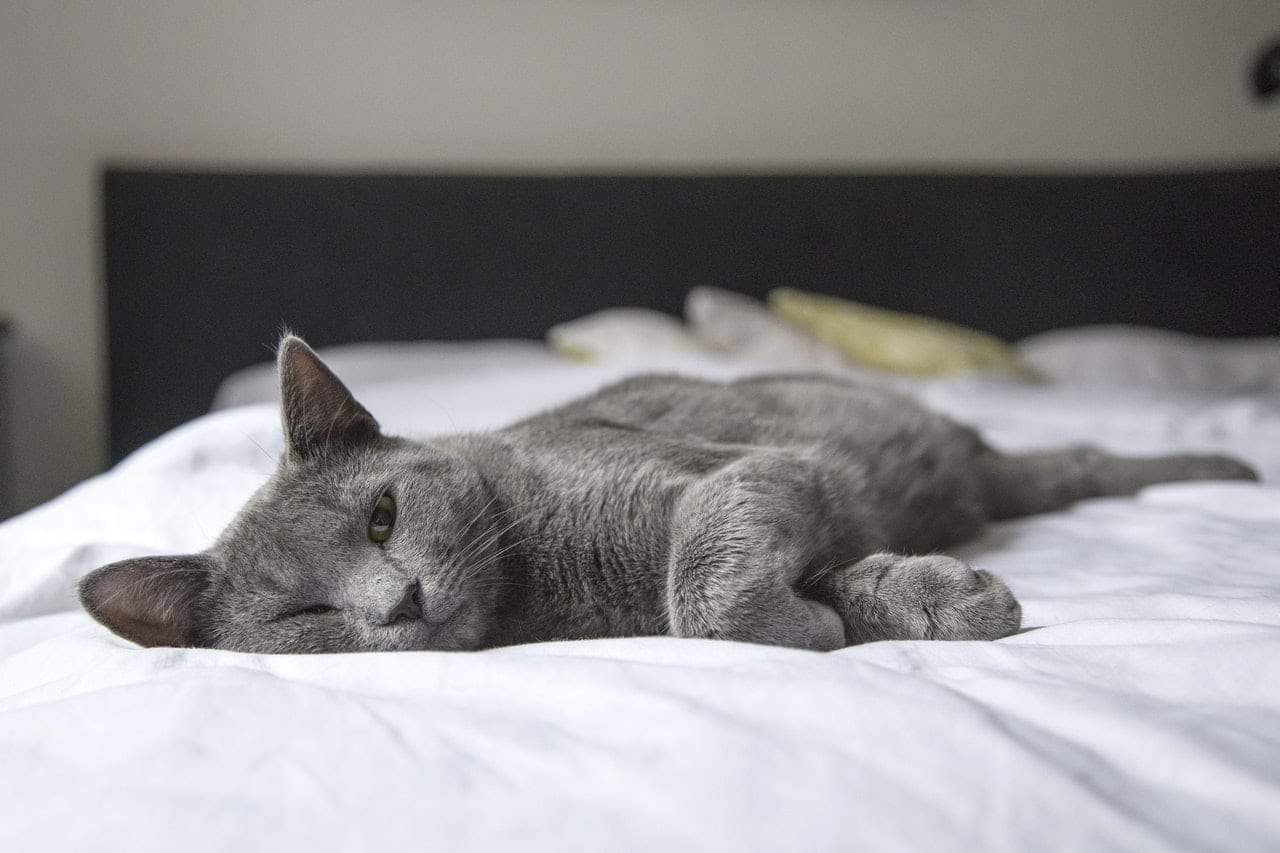
Excessive Purring
We know that cats will purr as a means to show that they are content, but a cat may also use their powerful purr to “self-heal” when necessary. A cat’s purr vibrates at 25-150 HZ, which is the same frequency that assists in physical healing with the same benefits that increase bone density.
Want to know more about why cats purr? Check out our article on it here!
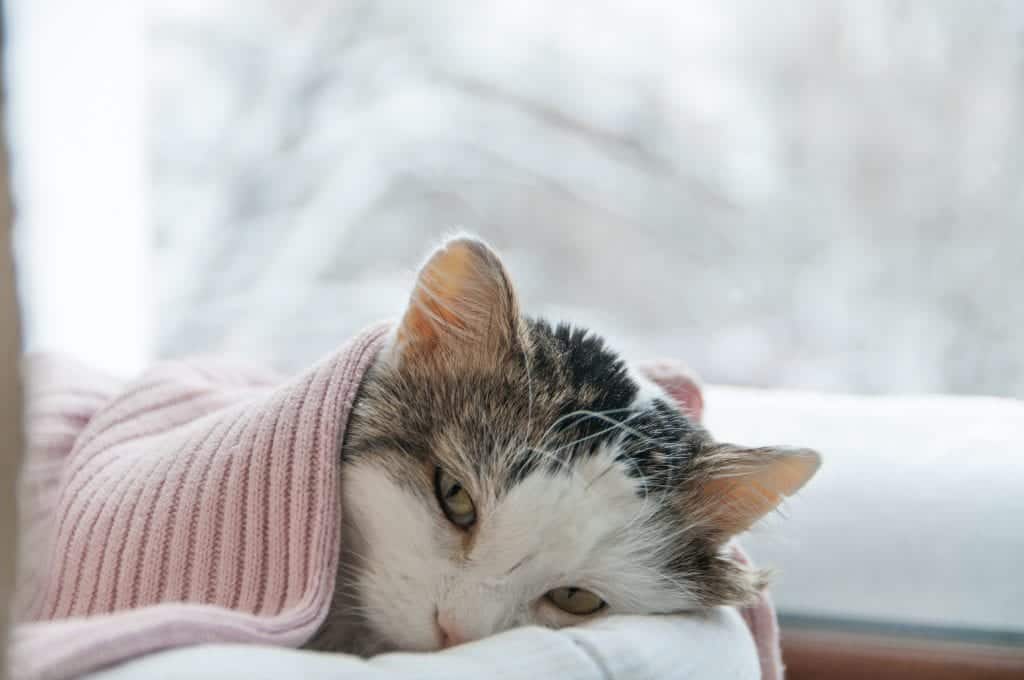
Changes in Activity
When we are sick, we are often malaised and lethargic. This is certainly true for your cat as well. If your cat is in pain, they may show it to you by remaining still or limiting their activity. Should your usually cuckoo kitty suddenly seem very reserved and still, take them over to the vet to get examined. You can never be too careful when it comes to your feline friend.
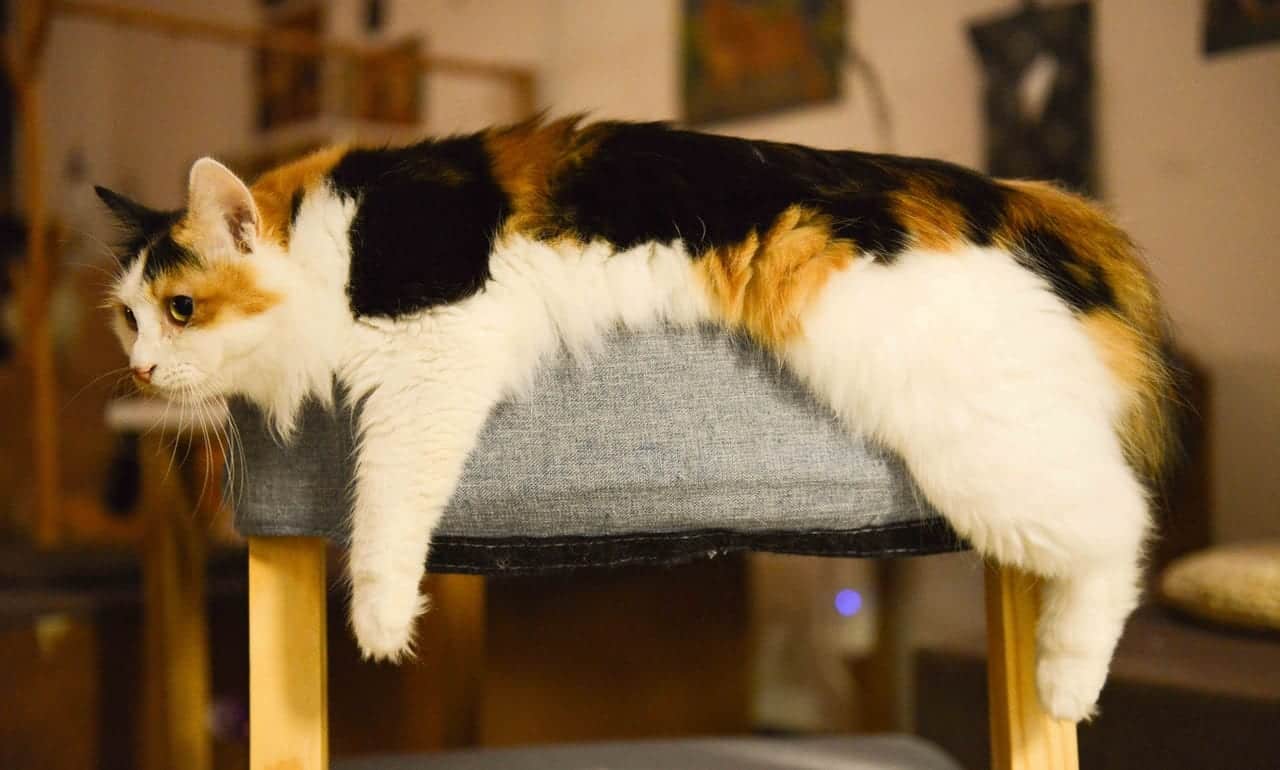
Changes in Appetite And Thirst
For your cat, if they are in pain, their usual appetite may decrease as a signal. Many cats can be picky eaters, but if your usually hungry cat seems to be disinterested in what’s in their food bowl and there hasn’t been a change in their diet, keep a close watch on them. Some cats who are in pain may also be less inclined to drink water regularly–or the complete opposite–and may become excessively thirsty.
If your cat has become excessively thirsty, it could mean a number of things. This could be a behavioral problem related to anxiety or stress or a manifestation of an underlying metabolic disease, and perhaps a sign of diabetes mellitus, chronic kidney disease, and hyperthyroidism. Pain in the mouth area would also be a reason for your cat not wanting to eat or drink per usual as they associate this action with the pain they are experiencing.
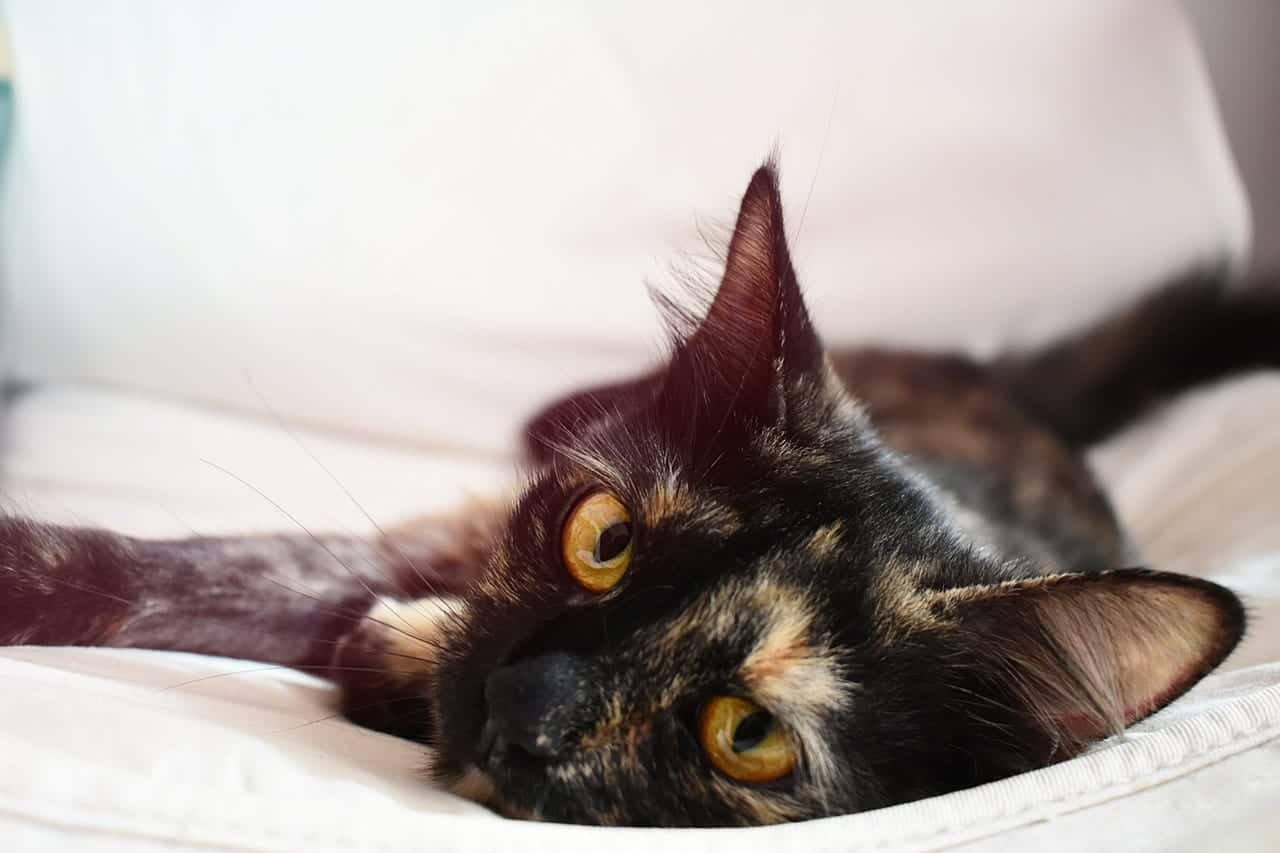
Your Cat’s Usual Bathroom Behavior Has Been Interrupted
As mentioned above, if your cat is drinking excessively, they will most likely be urinating more than usual as well. If a cat is experiencing back pain of some sort, it may cause them difficulty entering/exiting their litter box, and to compensate, they could do their business outside of the litter box. Cats who are in pain can also experience changes in their intestinal tract which can result in constipation. Although cleaning the litter box isn’t exactly high on our list of favorite things to do as a cat owner, changes in your cat’s bathroom behavior are your indication that your cat could be suffering.
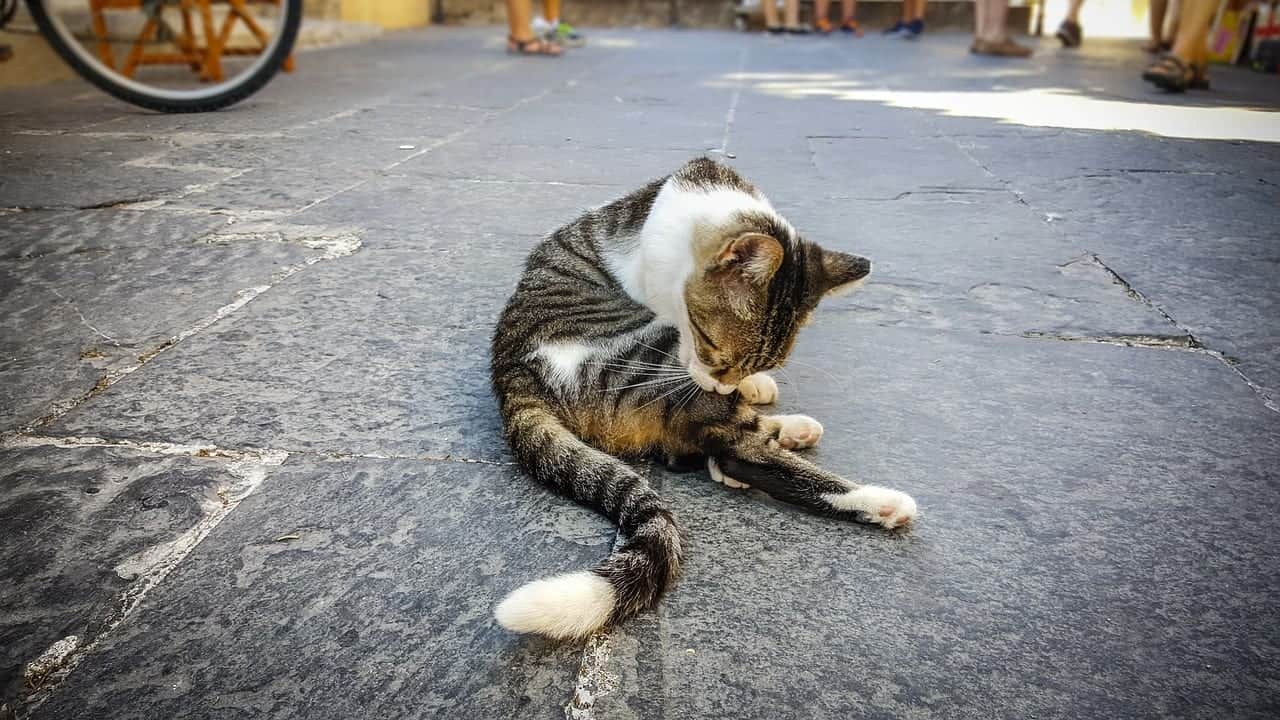
Grooming–A LOT
If your cat has a wound or an area of their body that is causing them pain, they may focus their attention on it by way of grooming. All cats groom themselves as a way of keeping nice and clean–so this is more if you notice the excessive grooming is in one particular area or region of their body.

We’ve covered the basic signs your cat is in pain, but for a brief checklist on all the signs to watch for from PetMD, please see below:
- Lameness
- Difficulty jumping
- Abnormal gait
- Reluctance to move
- Reaction to palpation [applying light pressure with the hands]
- Withdrawn or hiding
- Absence of grooming
- Playing less
- Appetite decrease
- Overall activity decrease
- Less rubbing toward people
- General mood
- Temperament
- Hunched-up posture
- Shifting of weight
- Licking a particular body region
- Lower head posture
- Blepharospasm [squinting]
- Change in form of feeding behavior
- Avoiding bright areas
- Growling
- Groaning
- Eyes closed
- Straining to urinate
- Tail flicking
You are your cat’s health advocate and the key to keeping them from suffering in silence. Share this with other cat owners you know if you think it could help them!
REMEMBER: ADOPT, DON’T SHOP; FOSTERING SAVES LIVES & SPAY AND NEUTER!
Related Story: 6 Reasons Why Cats Go Outside Of The Litter Box
Related Story: How Often Should You Take Your Cat to the Vet?


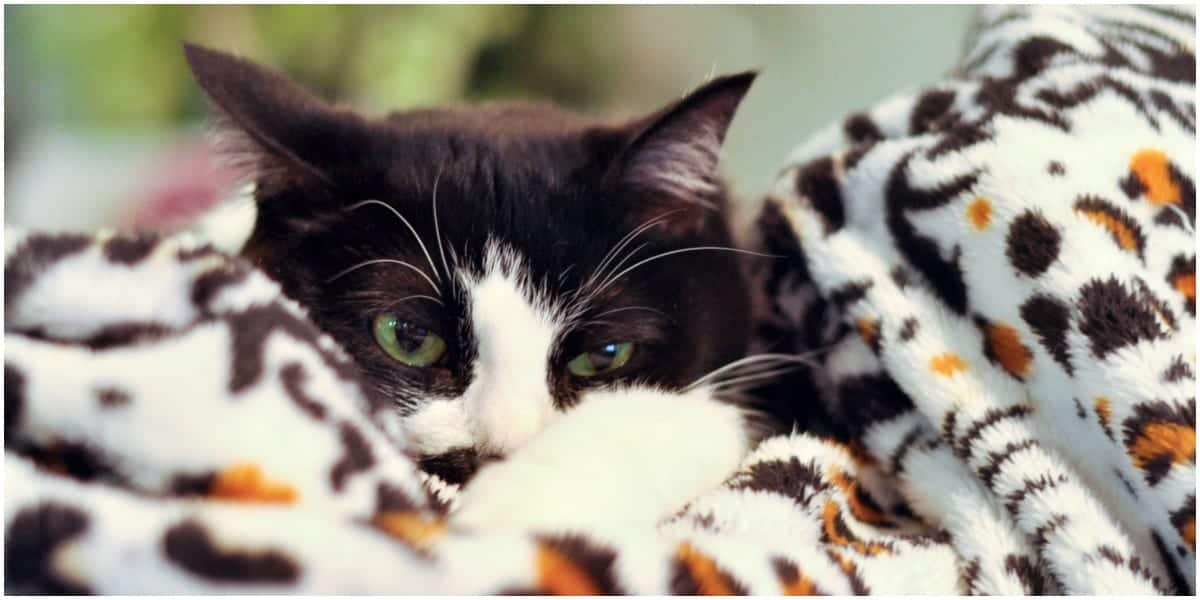
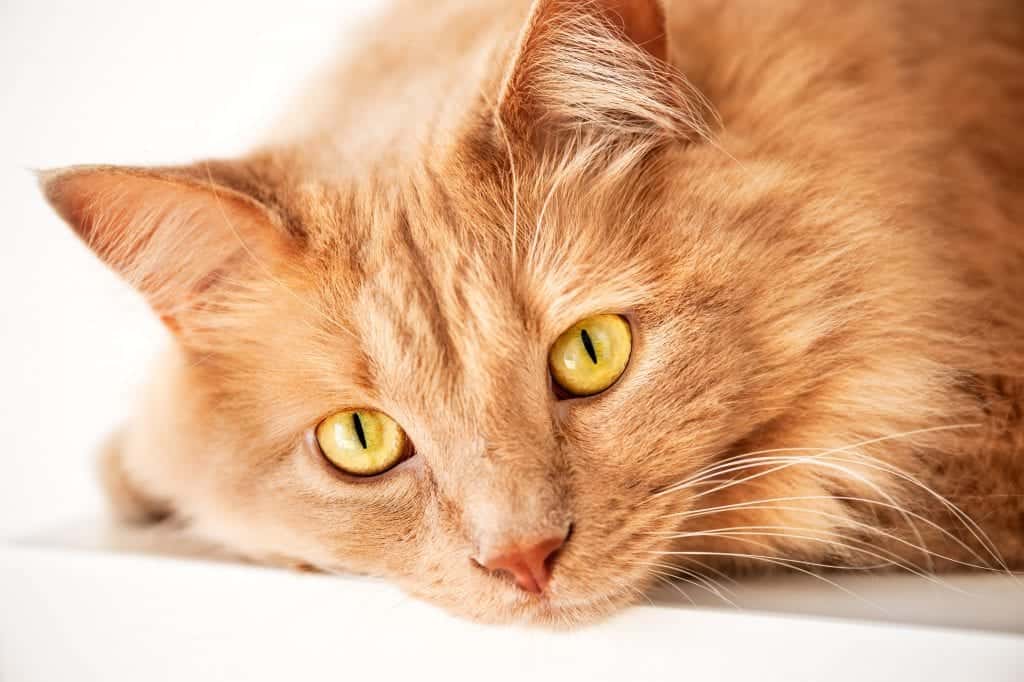

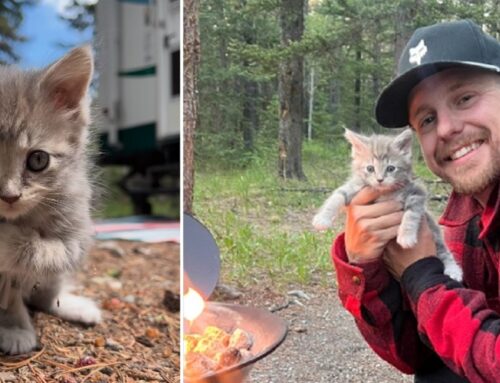

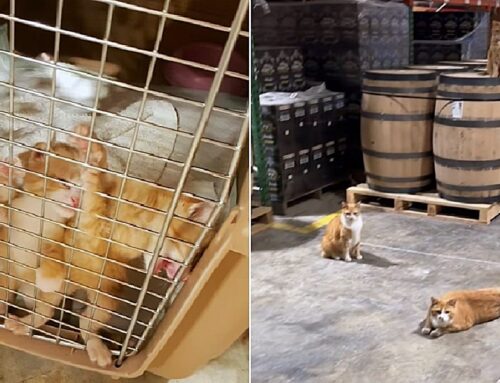



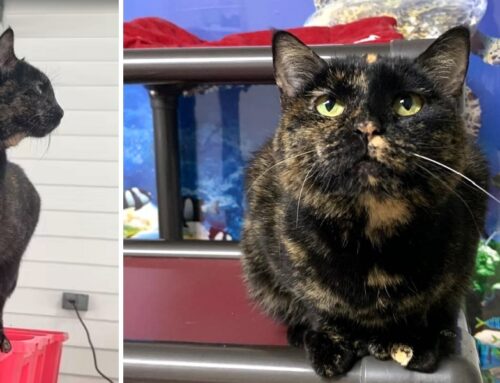


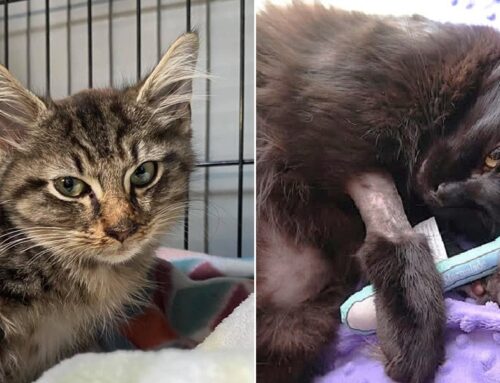
Excellent advice. Very clear and concise, anyone should be able to follow. Applies to most animals xxx